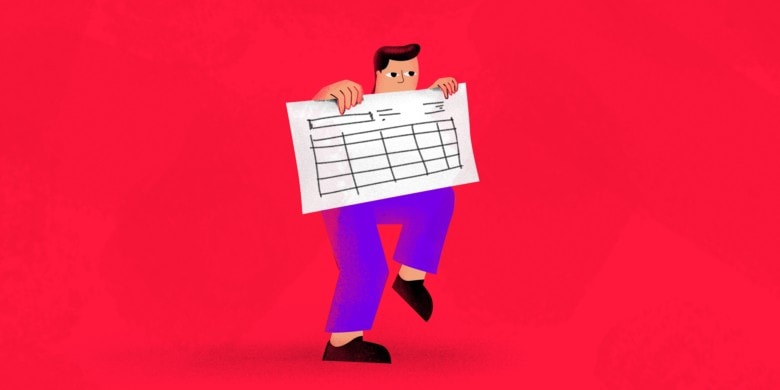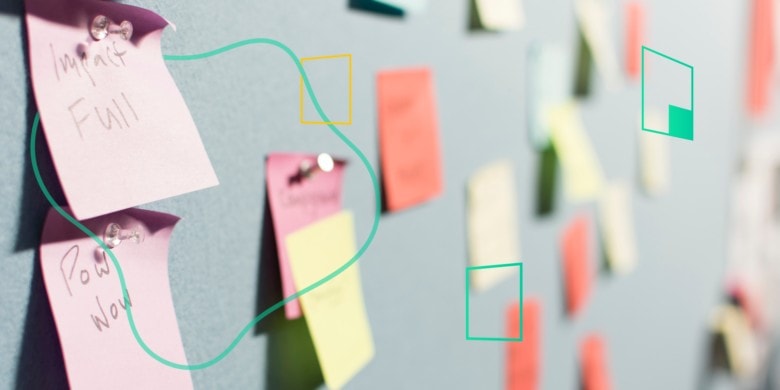You’re focused on a complex problem and nearing the finish line, but that little Slack icon keeps bouncing. Whether someone knocks on your door, a lawn mower revs up, or a conversation interrupts you, the Zeigarnik Effect suggests you’ll remember the moment.
How will you think of this task tomorrow or next week? When will you have the mental power to turn it into a list of completed tasks?
The Zeigarnik Effect is a psychological principle that says we’re more likely to remember interrupted or incomplete tasks than we are those we finish. Task interruption helps them stick in our brains a little longer, which can be helpful in some situations. Too much, however, can harm our mental health.
To understand this approach to an interrupted task and to promote mental well-being, let’s dive a little deeper into the cognitive tension around the Zeigarnik Effect.
Boost your team’s efficiency with Hubstaff's productivity tools
How does the Zeigarnik Effect work?
So, let’s start with what is the Zeigarnik Effect.
In the dynamic landscape of productivity, delving into the psychological intricacies that impact our performance is indispensable. To prime our focus on completed tasks, we should consider the Zeigarnik Effect.
This psychological phenomenon was named after the Russian psychologist Bluma Zeigarnik (1901-88) and was first discussed in the journal Psychologische Forschung in 1927.
At its core, the concept says that an incomplete or interrupted task stands out more vividly in our minds than a completed one. The interruption and our desire to complete the task increase its presence in our short-term memory and may also give it a home in our longer-term memory.
Your to-do list
Another aspect is that we remember things we need to do better than what we have already completed. It’s one reason that to-do lists are effective.
These memory effects are significant because they shape how work can support people to finally complete a task after a delay. When your work spans multiple days, finding this motivation is essential.
It’s an interesting observation that will completely impact your work. When applying it to interrupted tasks, it may be more beneficial to help someone get back on track. Using it to improve recall may have unintended consequences on mental health and self-confidence around remaining tasks.

Some science behind the Zeigarnik Effect
While we’re not psychologists here at Hubstaff, discussing this science and its interplay with finished and unfinished tasks is good for us. The Zeigarnik Effect boils down to incomplete tasks, creating tension or apprehension in the brain.
People want to relieve this pressure — and that’s why they’re motivated to remember and tackle these tasks. Then, their brain rewards them through changes in neurotransmitters such as dopamine.
If the tension of the interrupted tasks is intense enough or prolonged enough, it can become a permanent memory. This is beneficial when you’re not thinking about the stress of the project but instead remember its steps in greater detail.
Evolution of the principle
Zeigarnik Effect research initially focused on memory retention, such as studies on how waitstaff can remember complex orders without writing things down. Research also looked at students, their study habits, and internal reward expectancy after study sessions. It reviewed active rehearsal of tasks for ways to help people remember incomplete activities.
As the data and techniques improved over time, researchers turned their attention to work motivation and task performance. Today, we’re thinking of The Zeigarnik Effect for its impact on how people engage with goals and tasks in their personal and professional lives.
The Zeigarnik Effect comes from Gestalt psychology. It relies on one core principle from this school of thought: people create closure by filling in the blanks of a task or situation. Most importantly, our brains want this closure.
While that’s often thought of in terms of visual cues, it’s important to note that creating lists builds the same type of demand in our brains.
Its presence in work
Checklists, project management tools, and other tools give us the need to seek resolution and closure.
An unfinished task creates a mental tension that urges us to act.
Researchers, including those in the workplace, can leverage this cognitive drive to compel people to not only finish incomplete tasks but also to prioritize them and drive greater focus.
The ultimate goal is to both complete a task and improve productivity.
The principle is used even in some therapy sessions, such as psychodrama, where the desire to finish an experience has a clear link to brain reward centers and dopamine releases.
The Zeigarnik Effect in our day to day
The Zeigarnik Effect manifests throughout our daily lives, influencing how we manage tasks, spend time, and make decisions.
For most of us, the most straightforward example is a to-do list. We write down items that need our attention, which gives our brain a visual representation of the unfinished tasks.
That creates an imprint in our minds and gives us a drive to finish tasks and feel relief from the burden.
Your project management tools likely rely on this psychological principle to help get work done. Teams often experience heightened motivation as they approach project milestones. Prioritization can be a significant help.
Missed deadline reminders cause us to extend mental energy. The emails and notifications tend to interrupt other work. That can redouble attention and get us to tackle subsequent tasks with increased vigor — though there’s a risk of increased frustration.

How does the Zeigarnik Effect relate to procrastination?
While the Zeigarnik Effect can be a catalyst for motivation, its relationship with procrastination adds a layer of complexity to getting things done.
Introducing stress purposefully to try and help people either remember or stay on task might not be the best thing for their mental well-being.
Procrastination is often fueled by a task being large or uncomfortable. Our fears can make it more challenging to get started. This builds tension, and for many, it pushes past an inflection point where avoiding an issue is easier than tackling it.
The Zeigarnik Effect can play a role in addressing that procrastination by trying to remove the feeling elements.
When tasks feel overwhelming, break them down into smaller components and list these out. Then, use these small steps as interruptions for something else. Work on small pieces and give yourself permission just to complete a small piece at a time.
There’s likely a pattern in this type of work that can help you leverage the Zeigarnik Effect to address procrastination and worries about work.
Implementing the Zeigarnik Effect at work
Practical implementation of the Zeigarnik Effect involves incorporating strategies that align with the cognitive principles at play.
It’s important to understand how the effect works and how lists, interruptions, and breaking tasks down into smaller components can help.
You’ll want a deeper understanding before applying this effect to anyone else’s work.
The principles behind this effect can be useful in larger project planning and management. Instead of trying to “hack” someone’s brain or productivity, think about it as a roadmap for getting to successful project completion.
The Zeigarnik Effect encourages a few practices that are useful in project management:
- Turning large projects into a series of smaller tasks
- Setting deadlines to create accountability for individual tasks
- Allocating specific time for tasks
- Allowing people to drive their work — don’t stand over someone’s shoulder
- Creating a structured environment for the larger project where people can see the dependencies and impacts of their smaller tasks
- Building urgency by having tasks build upon one another
How does the Zeigarnik Effect relate to motivation?
The Zeigarnik Effect can be seen as one motivating factor for how we work — potentially improving productivity when leveraged correctly. Incomplete tasks create psychological pressure to address them. This then allows us to motivate ourselves.
You can use this motivation in your project management work to compel yourself forward or to encourage others to finish work on time.
Milestones, whether personal or professional, leverage this motivational force.
Importantly, the Zeigarnik Effect typically does not need external rewards. People are compelled to finish something due to an internal drive and internal rewards. Our brain chemistry gives us a positive feeling when accomplishing items and relieving that tension.
It’s an excellent force to use to motivate yourself and enjoy work. However, you should always use extreme caution when applying psychological principles to team members and staff.
You don’t want to turn into a cause of poor performance.
Tools and techniques
The mix of tools that leverage the Zeigarnik Effect depends more on your project and activities. There are countless “to-do list” apps and services, so a selection here should focus on easily checking things off the list.
Project management tools utilize this principle without necessarily thinking of it directly. Picking an option that lets your team control deadlines and assignments will reinforce internal responsibilities that the Zeigarnik Effect emphasizes and uses as motivation.
Tools like Husbtaff that allow for better time and team management also play a smart role. Time tracking, task management, project collaboration, and the ability to review related data in Hubstaff provide a streamlined approach to harnessing the Zeigarnik Effect for enhanced productivity.
A note on nuance
Research suggests that individual personality traits, such as conscientiousness and perfectionism, can influence the intensity of the Zeigarnik Effect.
Conscientious individuals may be more driven to complete tasks and experience stronger motivation from the Zeigarnik Effect. On the other hand, perfectionists might feel an increased burden from unfinished tasks, leading to higher stress.
Always watch your team for this and other factors to see what motivates them and what is too frustrating.

Understanding the challenges of the Zeigarnik Effect
While the Zeigarnik Effect can be a powerful motivator, it also presents challenges that can derail projects.
Trying to leverage interruptions and cognitive tension can create long-term stress. You run the risk of making people feel overwhelmed and overworked. Over-reliance can burn people out as incomplete tasks start to accumulate.
Don’t try to make the Zeigarnik Effect a “brain hack” option to take advantage of. Instead, rely on it as a way for people to keep to their own deadlines.
Managers can compound the harm when they push this principle around impending deadlines or unfinished business.
Let your people motivate themselves. If they feel that their livelihood is attached to unwinnable or delayed tasks, they are more likely to become disengaged with work. Teams may also engage in productivity theater to avoid the issue.
If the delays feel out of their control, this internal stress makes it very likely they will look for another job.
Supportive steps
To overcome some of the associated challenges with the Zeigarnik Effect, leadership can take a few steps:
- Offer stress-management strategies and outlets for teams
- Ensure deadlines are flexible
- Give people a way to share roadblocks before they completely stop projects
- Create meetings to reflect on project statuses, focused on resolution instead of blame
- Encouraging breaks
- Monitoring activity to ensure people aren’t overworked
- Using tools like Hubstaff to watch when people work and encourage a positive life-work balance
By adopting a proactive approach to mental well-being, individuals can harness the positive aspects of the Zeigarnik Effect while mitigating potential downsides.

Starting your journey
The Zeigarnik Effect offers a profound lens through which to understand and optimize human behavior in the realm of productivity. Interrupted tasks live in our brains differently from completed ones. That can impact self-esteem and the sense of accomplishment we find in our work.
Embarking on this journey can help you understand how to motivate yourself. You’ll also get insights into why some tasks, projects, or worries may creep into your mind at night or when otherwise occupied.
There is an innate desire to relieve mental tension. Focus on that as a way to motivate yourself and avoid the trap of trying to engineer it to push teams further via increased strain.
Be a positive force for their mental health and yours.
Ready to tackle productivity in a positive light? You can take the first step of incorporating the Zeigarnik Effect into your daily life thanks to time tracking tools like Hubstaff. We help you streamline tasks and even reduce distractions so that this principle only impacts the most important aspects of your work.
Try it out now and start your journey to peak productivity.
Most popular
The Critical Role of Employee Monitoring and Workplace Security
Why do we need employee monitoring and workplace security? Companies had to adapt fast when the world shifted to remote work...
15 Ways to Use AI in the Workforce
Whether through AI-powered project management, strategic planning, or simply automating simple admin work, we’ve seen a dramatic...
The AI Productivity Panel: Lessons From Leaders on What’s Working (and What’s Not)
When I moderated this AI productivity panel, I expected a solid conversation. What I didn’t expect was the flood of real-world i...
Employee Performance Dashboards: Templates, Tools, and Best Practices
Keeping track of how your team’s really doing can be tricky. Spreadsheets pile up, one-on-ones only tell part of the story, and...



![How to Use Time Blocking to Make 2024 Your Most Productive Year Ever [Free Template]](https://hubstaff.com/blog/wp-content/uploads/2018/12/time-blocking@2x-780x390.png)
